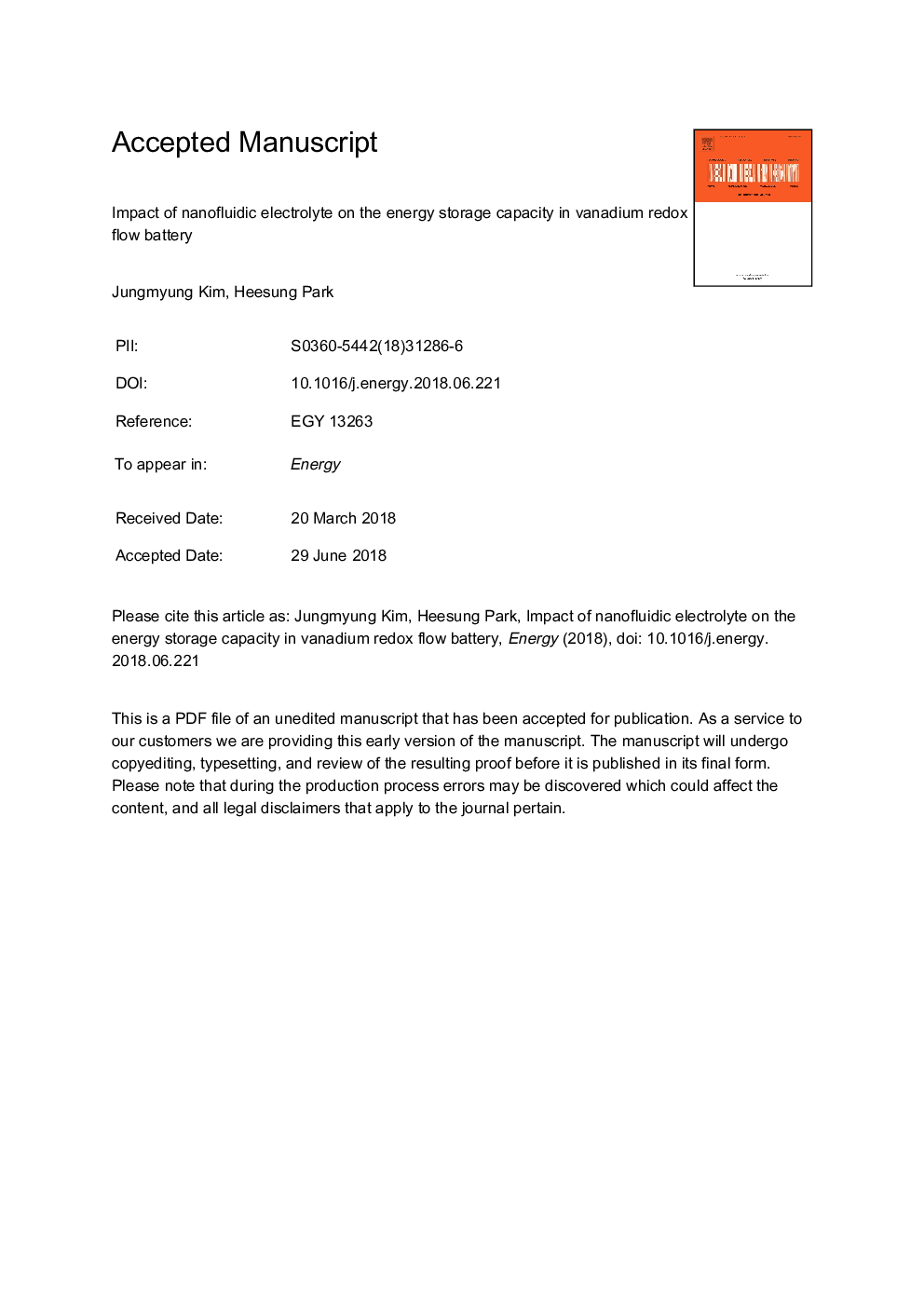| Article ID | Journal | Published Year | Pages | File Type |
|---|---|---|---|---|
| 8070945 | Energy | 2018 | 20 Pages |
Abstract
The limitation of energy storage capacity in vanadium redox flow battery impedes further commercialization of the battery. The concept proposed in this study is to overcome the limit by using nanofluidic electrolytes. Multi-walled carbon nanotubes (MWCNTs) are chosen to disperse in electrolytes due to their high surfaces to volume ratio. Nanofluid electrolytes with three electrolyte weight percent MWCNT (0.05, 0.1, 0.2â¯wt%) were tested and compared with the pristine electrolyte. Half-cell test with cyclic voltammetry has shown that electrochemical reaction performance is proportional to the content of MWCNT in nanofluidic electrolytes. The redox reaction of nanofluidic electrolytes are enhanced by the increased electrochemical activity and reversibility in addition to the lower polarization effect. Meanwhile, single-cell test reveals that the optimum weight percent of nanofluidic electrolytes is 0.1% of MWCNT because the electrolyte containing 0.2% of MWCNT induces the unwanted precipitation at the electrodes during the electrochemical reaction. After completion of 62 charge/discharge cyclings, nanofluidic electrolyte with 0.1% MWCNT retains specific discharge capacity of 31.7 Ah Lâ1 while pristine electrolyte does 26.0 Ah Lâ1. This corresponds to 22% enhancement of energy storage by using the nanofluidic electrolytes. We conclude that nanofluidic electrolytes can considerably improve the energy storage capacity with optimized content of MWCNT.
Related Topics
Physical Sciences and Engineering
Energy
Energy (General)
Authors
Jungmyung Kim, Heesung Park,
